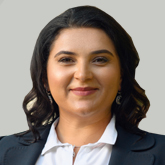Local authorities traditionally believe that every community should have a municipal clinic where anyone can get free and relatively high-quality medical services. The healthcare reform is drastically changing this situation. Now practicing doctors or their associations, private clinics and medical centers will also be able to provide Ukrainians with free medical services, just like municipal hospitals, and the quality of their services will also be supervised by the National Healthcare Service of Ukraine (NHSU).
Yet, many doctors are still unclear on how to become part of this system, how to arrange things without breaking the law, how to organize everything so as not to lose money, how to keep tax and accounting records, etc.
The answers are now available in the Operational Manual of the Healthcare Ministry entitled "How to set up a primary healthcare system at the local level", jointly developed with ILF experts.
Under the guidance of Olena Khytrova, head of healthcare and pharmacy department, ILF lawyers clarified in the Manual the main models of primary healthcare organization in territorial communities, explaining the features of each model, the hiring options and most importantly – possible combinations of these models. This list is not exhaustive and the best combination depends on the needs of the residents of a particular city/community.
3 main models of primary care:
- Municipal non-commercial enterprise. Those are round-the-mill local polyclinics, outpatient clinics and newly established primary care centers with the status of a municipal non-profit enterprise. See the algorithm for making medical institutions autonomous here: https://autonomoushospital.com/
- Doctor as an independent entrepreneur (sole proprietor). Doctors need a license to start their own practice. Also, in order to get funding from the NHSU, they must sign an agreement with it. This model allows doctors to optimize the tax burden and increase their income. Learn how to start a private practice and what 7 steps you should take here: https://privat.practice.autonomoushospital.com/
- Private medical institution. If a community lacks primary healthcare institutions, it does not necessarily have to open a new one. Instead, it could arrange a deal with a private medical institution so it would service the population under a contract with the NHSU. The community can rent out premises on concessional terms, finance medical programs from the local budget, etc.
However, while putting all your eggs in one basket and focusing the whole healthcare potential on just one model looks easier, it’s not always advisable. The population of certain communities might want some kind of alternative to a municipal medical institution. Thus, a combination of the above models might yield better results.
Possible model combinations:
- Joint venture of several sole proprietors. Private practitioners that have signed contracts with the NHSU and work within the same community can pool funds, expertise and other resources without creating a legal entity. Working together, several doctors could share expenses on rent and equipment as well as on salaries for technical staff. Such partnerships require doctors to sign contracts containing a detailed description of the terms of their cooperation and responsibilities.
- Resource center municipal enterprise. In addition to medical services, a municipal hospital can provide services to medical doctors that have signed contracts with the NHSU.
- Accounting, legal, laboratory and diagnostic services;
- Lease of real estate;
- Temporary use of equipment and premises with specialized equipment.
3. A municipal non-commercial enterprise (hospital) offers its assets for management. To reduce the cost of maintaining unused premises or even make them a source of income, a hospital may allow legal entities or individuals to run them. An entrepreneur could open a sports center or a rehabilitation center in an empty building, or whatever else the community requires.
"Study the needs of the residents to help you choose the right primary care model. In some cities, there are many children, in others – elderly people, some places could have a sawmill where workers frequently suffer injuries, and so on. Find out what people in your community need and then see what you have and how to make use of it. Perhaps there’s a private medical center that will sign a contract with the NHSU while the community provides premises on concessional terms or funds special programs for the population, etc. Communities could offer temporary or permanent housing to private practitioners or help them with the equipment for their offices. Under each of the described models, primary healthcare remains free for the population, and communities will be able to increase their social and material capital," says Olena Khytrova.


